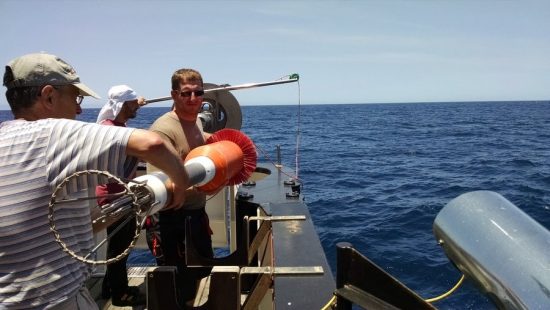



Findings indicate changes in equatorial undercurrent.
October 2015 saw one of the strongest measured El Niño occurrences in
the eastern Pacific. Scientists from Kiel travelled on board the
research vessel Sonne to the low-oxygen regions east of the Galapagos
Island and along the coast of Peru to gather new hydrographical data
that gave rise to new insights into the impact of El Niño on the oceans.
In just a span of several years, El Niño has caused the largest natural
temperature fluctuation in the tropical Pacific; the impact of this has
been felt globally, leading to abnormal temperature increases in the
central and eastern equatorial Pacific. It is accompanied by droughts
and floods in various parts of the world; in 2015, the intensity of
such occurrences was particularly strong, but it has since reduced in
intensity. At the end of 2016, La Niña is expected to follow. This is
El Niño’s counterpart and will lead to colder extremes of climate in
the affected regions.
Last autumn, at the peak of El Niño, scientists from GEOMAR Helmholtz
Centre for Ocean Research Kiel went on an expedition to the eastern
equatorial Pacific to investigate the influence of El Niño on ocean
currents and the buoyancy of the deep water off Peru.
The results of their research, published in the Ocean Science journal,
shows that the equatorial current system has changed greatly. Author of
the study Dr Lothar Stramma from GEOMAR said that in 2012, the team
discovered that the speed of the equatorial undercurrent was almost 11
million cubic metres per second in the eastern Pacific. Three years
later, it had decreased to 0.02 million cubic metres per second.
“The nutrient measurement off the Peruvian shelf shows nutrient-rich
water of lower bouyancy from the deeper water layers, with this effect
spreading southward. A reduced lift [less bouyancy] leads to less
biological productivity and this has massive consequences for the
otherwise productive fisheries in the region,” added Prof Dr Hermann
Bange. In contrast, higher oxygen content was detected in the usually
oxygen-poor regions of the eastern Pacific. This is caused by the new
flow and water mass distributions during the El Niño. There is no sign
of any weakening of the observed long-term decrease in the oxygen
content of the tropical oceans.
The results, together with computer models, are now being used to improve predictions about El Niño.
More information: www.geomar.de
 Mares
Mares 18th July 2016
18th July 2016